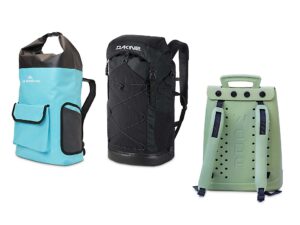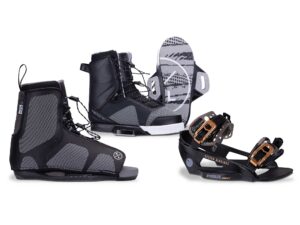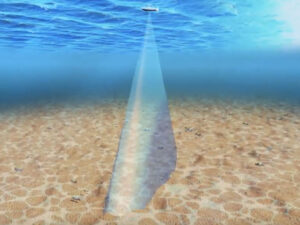It’s an annoying world. Vacuum cleaners are too loud; you need three remotes to turn on the TV; and packing peanuts still scatter everywhere. As technology gets better and recreation simpler, little annoyances become more obvious. That’s the side effect of boats getting better over the years. It’s now easier to sweat the little stuff. Herewith, our pet peeves and, best of all, how to fix them.
1. Keys and Ignitions
For starters, the whole ignition system is often an embarrassment. you buy a $50,000 car and the key looks like it could start the Millennium Falcon. The keys to a $50,000 boat look like they’re for a lawn mower. They’re made of a cheap alloy that won’t rust, but will bend. Another problem is if the inner retaining ring comes loose in the ignition, you can turn the whole cylinder rather than moving the tumblers. Better have some tools.
An easy fix is to put an index tab on the cylinder and to notch the hole so the retaining ring is only holding the cylinder in the hole, not stopping it from turning. But we shouldn’t have to bother with any of this. Maybe it’s time to start looking into keyless systems such as those from Mercury, Livorsi Marine and Hardin Marine.
2. Kill Switches
While we’re getting warmed up, the clip on most kill switches is another cheap out. They’re rusty after a season, hard to use and too small to snap onto anything stronger than a belt loop — or they’re plastic. When it’s cold, these things can be impossible to pinch and use. Plus the lanyards are usually too short and get tangled. I asked manufacturers why, and one gave me an honest answer: “It isn’t a sexy item that can be dressed up and sold for more, so it’s made as cheaply as possible.”
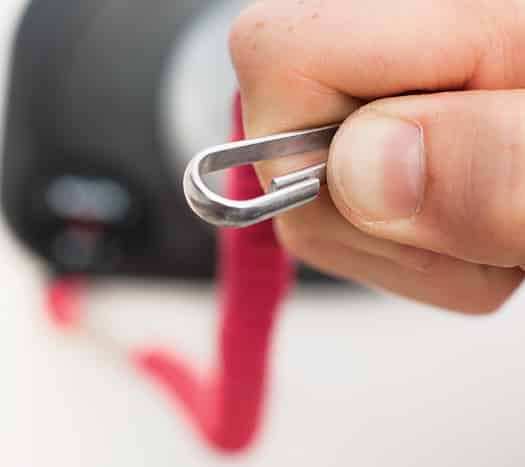
How much more would it cost to use nylon webbing and a carabiner to improve the package? a few dollars? We’re talking about something made to save lives!
3. Better Fuel Mileage
The planing-hulled boat is one of the least efficient methods of transportation ever devised. For the best efficiency, you need to keep a boat light, and ideally, the bottom should be flat. But you also need power. It’s a hard combination to find. It takes about 50 hp to 100 hp per ton of boat weight to get a boat on top of the water and staying there. Upping the power is expensive and adds weight — so you need more power to push the added weight. And you have to put some V in the bottom to make the ride bearable. All of which means staggering inefficiency.
In contrast, the most efficient way to move things on the water is with a displacement hull, which needs only 0.5 hp to 2.0 hp per ton of boat weight. The only problem is that you have to go slowly. There is a compromise hull form, though. If you’re willing to own a boat that’s long, relatively narrow and light in weight, and that has modest power, rounded chines and a flat deadrise aft, you’ll travel at a reasonable speed while going farther on less fuel. The semi-displacement hull can get into the 25 mph range even when the water’s rough, and it tops 3 mpg. The other options are some of the new catamarans that are claiming 6 mpg. Remember, for better miles per gallon, it’s all in the hull.
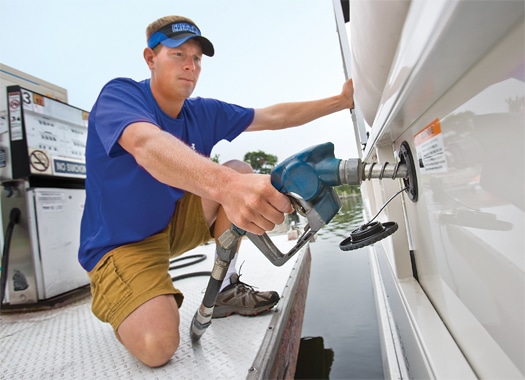
4. Bow Thrusters
You’re watching a beautiful boat come into the dock. The captain knows what he’s doing, quietly giving orders to his crew; then all of a sudden he’s yelling, and from inside the boat comes the sound of rocks being chewed up in a grinder — he’s turned on the bow thruster.
Bow thrusters are irritatingly noisy because they use a tiny prop spinning at high speed deep inside a pipe: a perfect situation for producing huge amounts of cavitation. Besides being noisy, they’re also inefficient.
The cure for this is to use one of the new jet systems, such as the one from Willdo (willdo.eu). There’s a high-volume pump in the engine room with an intake. Water is directed to jets at the bow (and stern if desired). It’s virtually silent, uses less power than a prop, puts a much smaller hole (1.75 inches compared with 4.5 inches) in the hull, won’t foul with trash in the water and is easier to install. Expect to start seeing these fitted on cruisers next year, as they’re an economical alternative to bow thrusters.
5. Boarding Ladders
Probably the dumbest thing they’ve done on boats is to put boarding ladders on the stern next to all that sharp, rotating metal and those noxious fumes. Years ago ladders were hung over the side. But the advent of the boarding platform in the ’70s changed all that. It was easier to mount a ladder on the stern, but it was also easier for people to get cut and scratched when boarding. Tests in a Boating Accident Report Database study show a high number of lower limbs being involved in accidents while boarding.
This has pushed ABYC (American Boat and Yacht Council) to develop new standards. But these won’t be in effect for a year or so. Until then, if you aren’t using an overthe- gunwale side ladder, make sure your stern ladder is at least 22 inches deep and that handholds are close by. Or start pressing builders to copy Intrepid and Boston Whaler, which offer built-in “dive doors” along the side of their boats.
6. Upholestry
The first part of your boat to go is usually the upholstery. It’s the true measure of a boat’s age. It cracks and becomes a perpetual soggy sponge. It looked so good in the showroom. What happened?
While the materials used, even good ones, are relatively cheap, it takes workmanship to make upholstery that’s going to stay comfortable and last. And that means a lot of labor. It’s time and money that builders don’t need to spend to make an initially attractive product, so sometimes they don’t.
How do you know if the builder has put in the effort? Look closely. You want dense foam that’s 1 to 2.75 pounds per cubic foot — it will last longer and help prevent the vinyl from stretching. Look for 28- to 40-ounce expanded vinyl with a supportive backing. Heavier is not necessarily better, but the vinyl should be treated with a topcoat to protect it from stains and to keep the material flexible by holding in the plasticizers.
The craftsmanship shows up in the stitching too. Look for “French stitching” that reinforces the standard single stitch with an extra line of knotted stitching on each side of the seam. It makes a tougher and flatter seam. At least five to six stitches per inch are best.
7. Horns
Try this. Point your bow into the wind a quarter-mile from a friend’s boat. Now sound the horn. If your friend isn’t listening for it, he probably never heard your boat honk.
To earn a Coast Guard-approved label, all the horn has to do is put out 105 dBa, which is about as loud as a crying baby, at 1 meter (3.3 feet). It’s also supposed to direct the sound “forward of the vessel,” but most likely yours is mounted on one side of the bow and pointed well off to that side.
To have a horn that’s loud enough so boats under way and upwind can hear your signal at least a half-mile away, you need a compressed air system. Builders don’t like these because they’re harder to install than the little squawk boxes, take away from the boat’s appearance and, here we go again, cost at least three times more. But in an afternoon you can install one from AFI or Ongaro Marine — they look salty and could save your life.
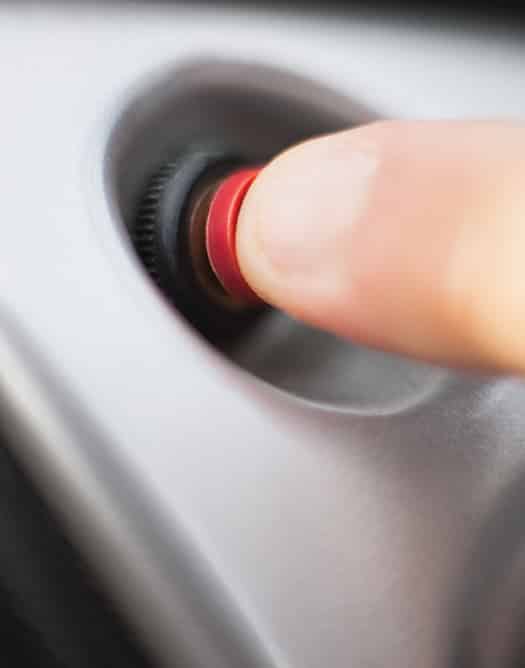
8. Running Lights
No fixture takes more of a beating than your running lights. They’re exposed to waves and spray that corrode sockets and connections, and they get banged around enough to stress and crack an incandescent bulb’s filaments. Take your running lights apart after a year and you won’t be impressed, and you’ll also see why they need frequent inspection. So you might be surprised that there’s a perfect alternative: the LED. But you won’t be surprised to know why LED running lights are showing up only on top-of-the-line boats — they cost more.
While LEDs are more expensive, they use less power and aren’t as expensive to run. Current draw is so low you could leave your lights on for a week and still start the engine, in theory. LEDs are almost immune to vibration, have a life measured in tens of thousands of hours, are small for their output, do not dim as rapidly when the current drops and have a highly directional light — making them ideal for running lights.
Five years ago a well-known designer predicted that incandescent bulbs would be dead on boats. He underestimated how penny-pinching builders can be.
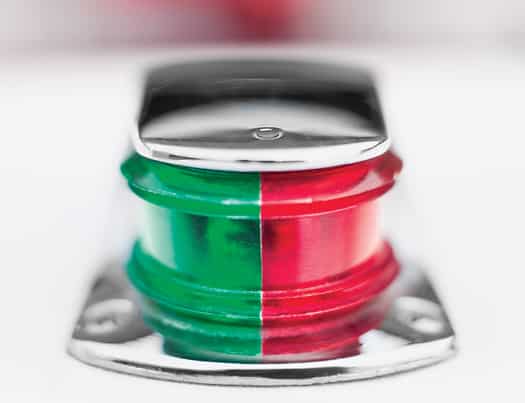
9. Trailer Wheel Bearings
Why would someone abandon a $70,000 boat alongside the highway? A better question is, Why does something like a wheel bearing, of all things, stop a road trip cold?
After a long ride, the bearings on your trailer get hot. When they’re submerged during launching, they’re suddenly cooled, creating a low-pressure area that draws water and grit past the seals. This corrodes and roughens the bearings, creating heat from friction that melts away the remaining grease. At this point the bearings fail, locking up the wheel and snapping the axle spindle with spectacular results.
One reason this happens is that the bearings and seals on your trailer are probably not the best. Boat dealers admit that cost is the main selling point on trailers, so trailer builders are tempted to use low-end parts. Another reason they fail is from infrequent use. A car’s bearings last longer because, when you hit water in the road, the car keeps moving and the water inside quickly evaporates. In contrast, trailer bearings stay wet and rust.
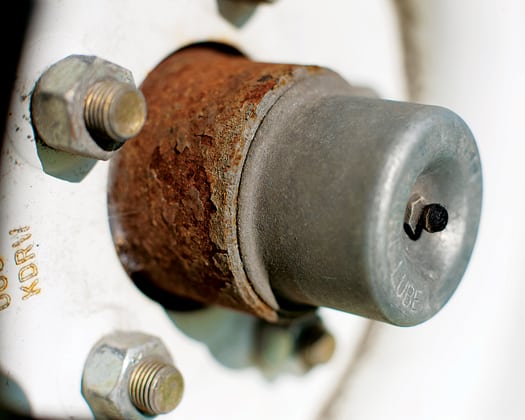
To prevent this, grease has to be kept under pressure so that water has no chance of getting past the seals, which is how the Bearing Buddy works. Durahub and TurboLube offer alternative systems by using oil instead of grease. It penetrates the bearings better, and its level can be easily monitored in clear bearing guards on the wheel. There might be something to this, as high-end trailer makers and boatbuilders such as MasterCraft are using it.
Just as it is with so many of our little aggravations that “have always been done that way,” someone has been working on a better mousetrap. We’re ready for more.

